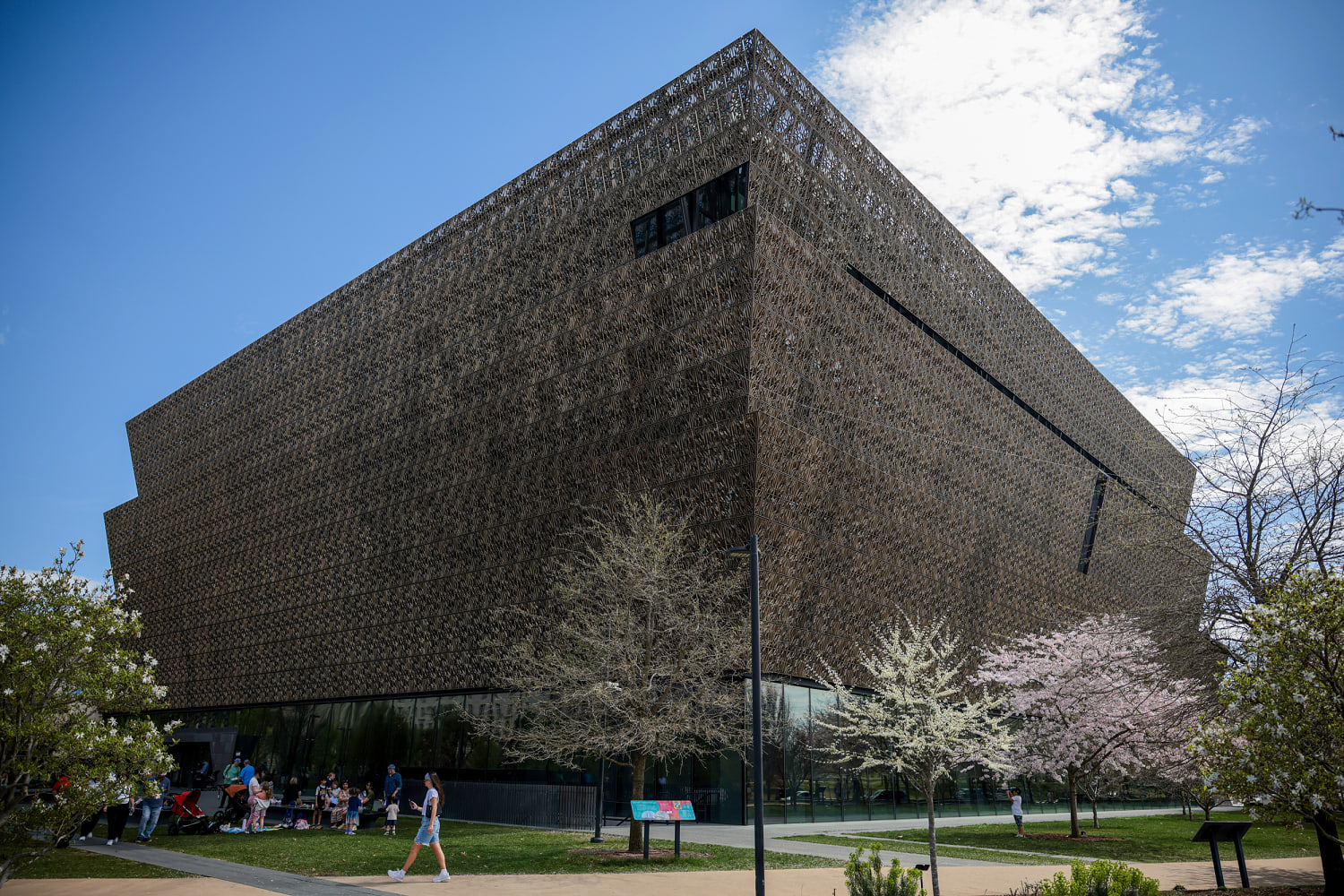
Before sunrise in Baltimore on Friday, the Rev. Robert Turner, senior pastor of the Empowerment Temple AME Church, set out to walk 43 miles from his church to the Smithsonian’s National Museum of African American History and Culture on the National Mall in Washington, D.C.
Turner, who has made the trip from Baltimore to D.C. more than 30 times to call for reparations for Black people across America because of the consequences of slavery, made the 14-hour journey this week to protest what he says is an attempt by the Trump administration to erase important American history. For him, the future of the museum that he and many other Black people lovingly call the “Blacksonian” is worth every step.
“If you don’t know the horrors that we went through, the hell, then you might not see the need for repairing,” Turner said. “It’s important for President Trump to know this issue of saving the Blacksonian and the issue of repairing America, and creating a culture of repair is very important to saving the soul of America.”
The context: Decades-old artifacts related to slavery and civil rights are rotating out of exhibits at the museum as a potential White House review looms.
In late March, President Donald Trump signed an executive order demanding in part that the museum take down any exhibits that “divide Americans based on race.” But now, the White House says it is not involved in any changes at the museum, while Democrats in Congress are sounding the alarm, signing a letter and introducing legislation to protect civil rights landmarks.
NBC News went inside the museum and found at least 32 artifacts that were once on display have been removed.
They include Harriet Tubman’s book of hymns filled with gospels that she is believed to have sung as she led enslaved people to freedom through the underground railroad, as well as a cloth made by enslaved people and a photo of the hip-hop group Public Enemy.
Also removed was the “Narrative of the Life of Frederick Douglass,” the memoir by one of the most important leaders in the abolition movement. Both items were gifted to the Smithsonian.
In a statement, White House spokesperson Lindsey Halligan said, “The White House had no involvement in removing any exhibit from the National Museum of African American History and Culture or any other Smithsonian institution. They did this on their own accord.”
The museum pushed back on criticism, saying on its website that “claims that objects have been removed for reasons other than adherence to standard loan agreements or museum practices are false.” It also listed 11 new artifacts coming on display later this month, including a photograph focused on how mass incarceration impacts Black people, a painting depicting a Ku Klux Klan figure, and artwork dedicated to Emmett Till, a 14-year-old Black boy from Chicago murdered by white men in 1955 while visiting family in Mississippi after the teen was accused of trying to flirt with a white woman.
In an email to NBC News, the museum reiterated that rotating objects is normal.
But Turner isn’t convinced. “We have to now say enough is enough, and America is better than this, Black and white,” he said. “We are stronger than this. If our children can endure being lynched, then white children can endure a classroom that teaches that America used to lynch kids.”
Liz Brazelton, the owner of a diary connected to the Oscar-winning film “12 Years a Slave,” isn’t convinced either. She’s the great-great-granddaughter of the lawyer who helped free Solomon Northup, a free Black man who was kidnapped and forced into slavery.
“I grew up with the diaries,” Brazelton said. “The most important thing in his diaries was the fact that he did help free this man who was a free man of color. And it’s just an amazing story. And in central Louisiana, it’s quite a prominent story. And I’m very proud of it.”
She gave one of her great-great-grandfather’s diaries to the museum in September 2015 on a 10-year loan. The museum sent her a letter in March, before the end of the term, saying, “We have decided to move ahead with the return a bit early to coincide with our internal gallery rotation schedule.”
The letter was sent two weeks before Trump signed the executive order targeting exhibits at the Smithsonian, which raised a red flag for Brazelton.
“When I saw the executive order, I wondered if they maybe knew something was going to happen and they rotated it out early because it was about slavery, that entire exhibit,” she said.
The Smithsonian declined NBC News’ request for an interview. But it repeated in an email that the diary move was a scheduled rotation to “allow for necessary rest following an extended display period.”
Brazelton said she was never told between 2016 and 2025 that her family’s diary was ever taken off of exhibit or rotated out. She believes it had stayed in the exhibit until recently.
The Rev. Amos C. Brown, a prominent pastor and civil rights leader, lent two of his books to the museum when it opened in 2016. The items included his father’s Bible, which is more than 100 years old and was carried by Brown during protests with Dr. Martin Luther King Jr., as well as a book on the history of Black people that was written in the 1800s.
“I was feeling that through this museum, America will see me, will see Black people,” Brown said. “We have been and are architects, designers of great things. … We took a negative and turned it into a positive, and telling the story of how people achieved great things in spite of oppression, in spite of those evil things that were done to us, that’s what that museum represents.”
Earlier this year, the Smithsonian sent him an email saying it would return his books. The museum called it a “standard practice,” adding that the loan expired in May. Still, Brown called that explanation an excuse, noting to NBC News that the museum has always chosen to renew the loan until now.
“I feel it to be very much inhumane, disrespectful and downright unjust,” he said of the decision to end the loan.
After his public pushback, the museum offered to keep the books permanently, according to a letter reviewed by NBC News.
The broader controversy is becoming increasingly political. House Democrats are demanding Vice President JD Vance, who now sits on the board of the National Museum of African American History and Culture, not take steps to overhaul the museum. In a letter, the lawmakers said, “This flagrant attempt to erase Black history is unacceptable and must be stopped.”
Rep. Terri Sewell, an Alabama Democrat who sits on a House committee that conducts oversight of the Smithsonian Institution, was among the lawmakers who signed the letter. “To tell the truth means to share the good and the bad. And if we don’t tell our stories, who will tell our stories?” she said.
Meanwhile, Turner plans to continue making his monthly, hourslong pilgrimage from Baltimore to Washington, D.C., to shine a brighter spotlight on the museum’s artifacts getting pulled from displays and to demand reparations for Black people across the nation.
“Our story cannot die, no matter who’s in the White House,” he said.








